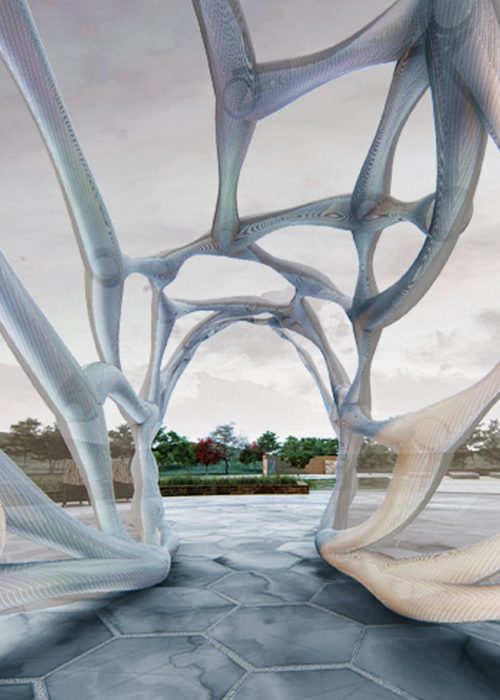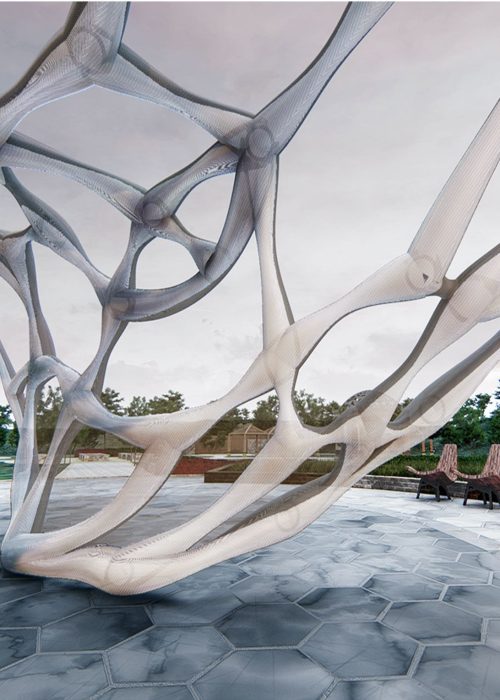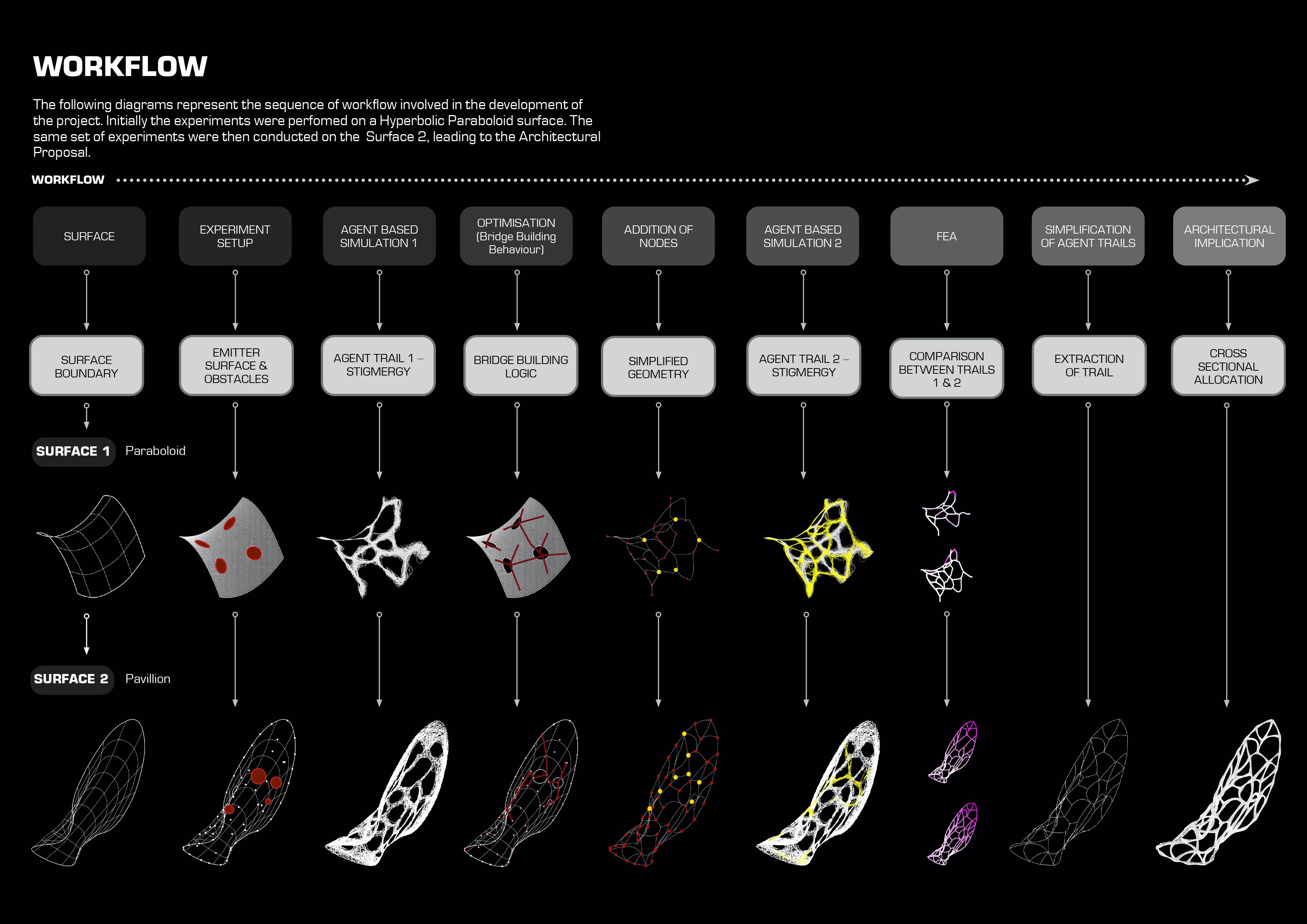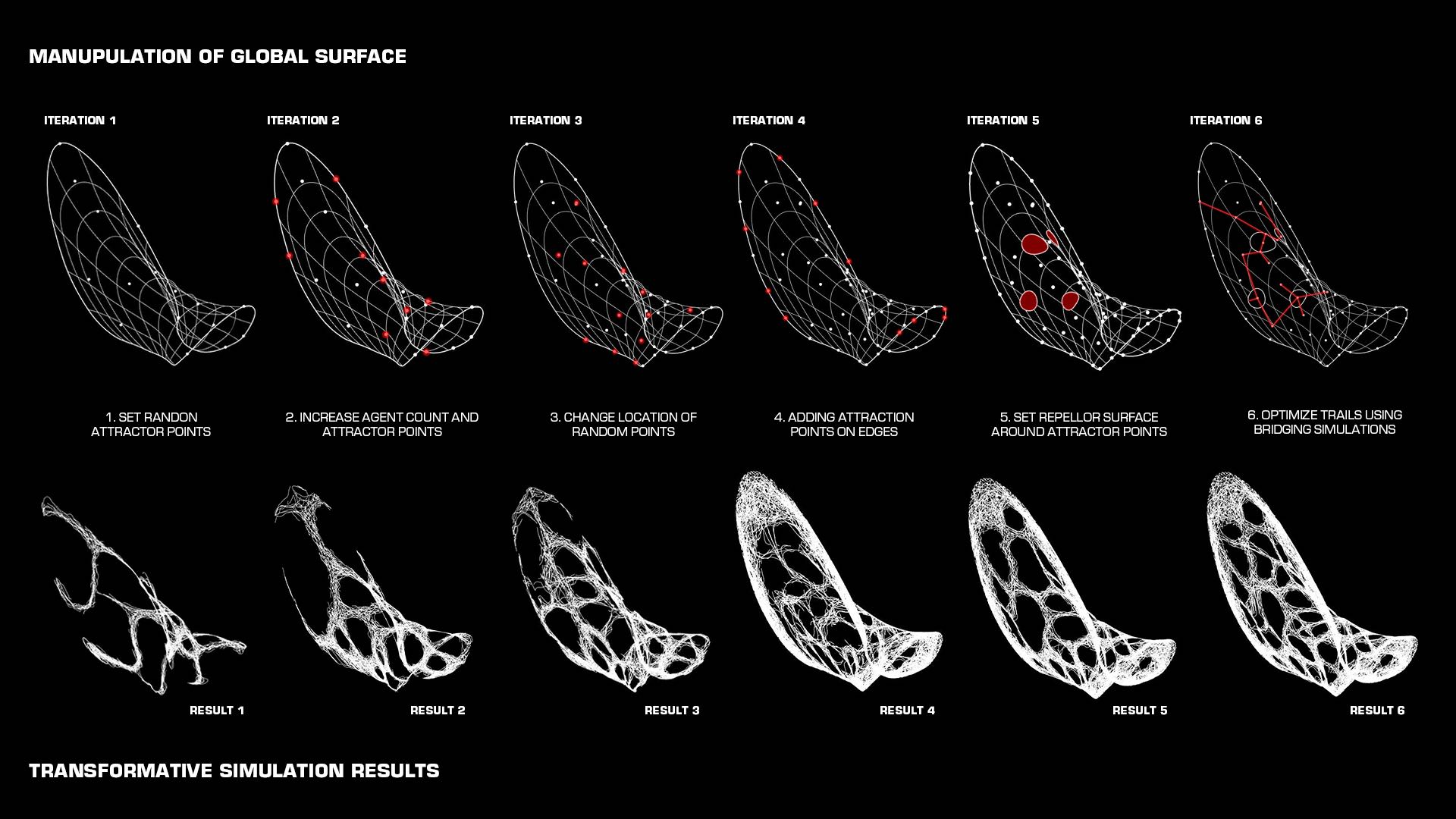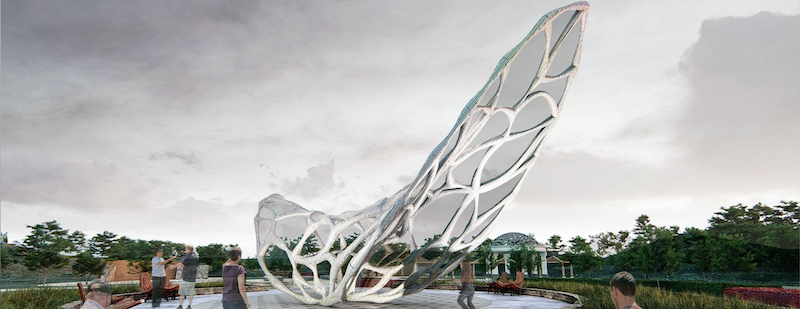Insect-Inspired STRUCTURE
Agent-Based Modeling Inspired by Social Insect Behavior
Nov 2021 – Dec 2021
Category: Construction Material, Computational Design
Distinction Honor; Natural Systems & Biomimetics
Director: Michael Weinstock
Social insects exhibit complex behaviors governed by inherent rules encoded within their DNA, facilitating efficient collective functioning. This project draws inspiration from social insect behavior, particularly the foraging behaviors of ants to develop an agent-based computational architecture. By abstracting these behaviors into algorithms, this project aims to demonstrate a systematic workflow for integrating biomimetic principles into architectural design. The process involves phases of research, abstraction, algorithmic derivation, optimization, and fabrication strategies, culminating in the generation of architectural forms informed by the principles of social insect behavior.
- The project bridges the fields of biology and architecture by applying principles of social insect behavior to architectural design.
- Through mathematical optimization and finite element analysis, the study ensures that the derived architectural forms not only mimic natural processes but also prioritize structural efficiency and stability.
Species Selection and Behavior Identification
The Army Ant species Eciton Hamatum, known for its foraging behavior in tropical forests, serves as the focal point of the study. Foraging behavior, characterized by stigmergic interactions, is selected for abstraction, along with the ancillary behavior of bridge-building. These behaviors are chosen for their relevance to architectural design principles and potential for algorithmic translation.
Algorithmic Abstraction and Computational Modeling
Selected behaviors are diagrammed and abstracted to derive algorithmic principles. Stigmergic interactions lead to the formation of agent trails, which, when digitally bound to architectural surfaces, inform the architectural output. Additionally, mathematical optimization techniques are employed to enhance structural efficiency, particularly in bridge-building scenarios. The resultant complex trail paths are simplified and analyzed using finite element analysis to determine optimal cross-sectional allocations along the architectural geometry.
Fabrication Strategy Development
Once the architectural form emerges from computational modeling and optimization processes, fabrication strategies are proposed based on biomimetic principles. Computational fabrication techniques are suggested for the assembly of the derived architectural form, ensuring alignment with the abstracted logic derived from social insect behaviors.






